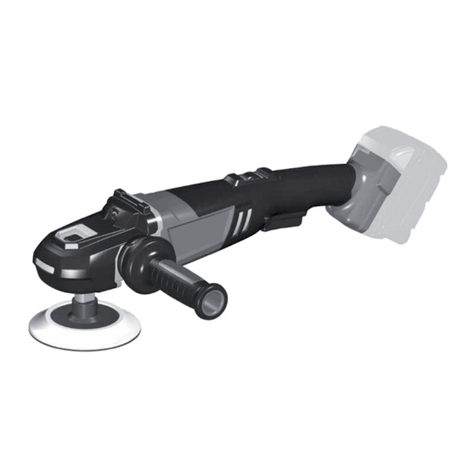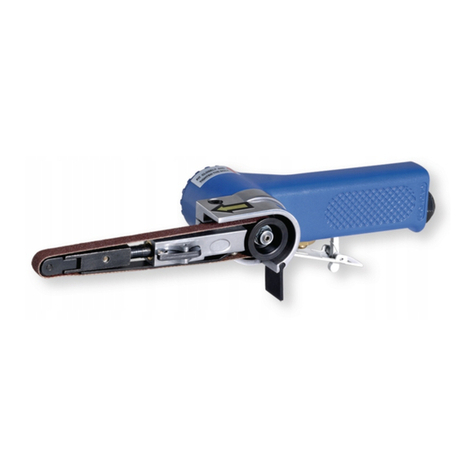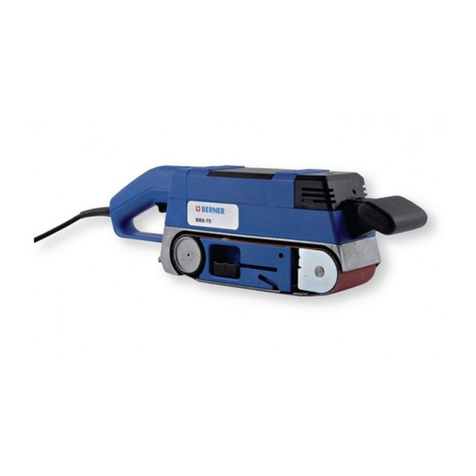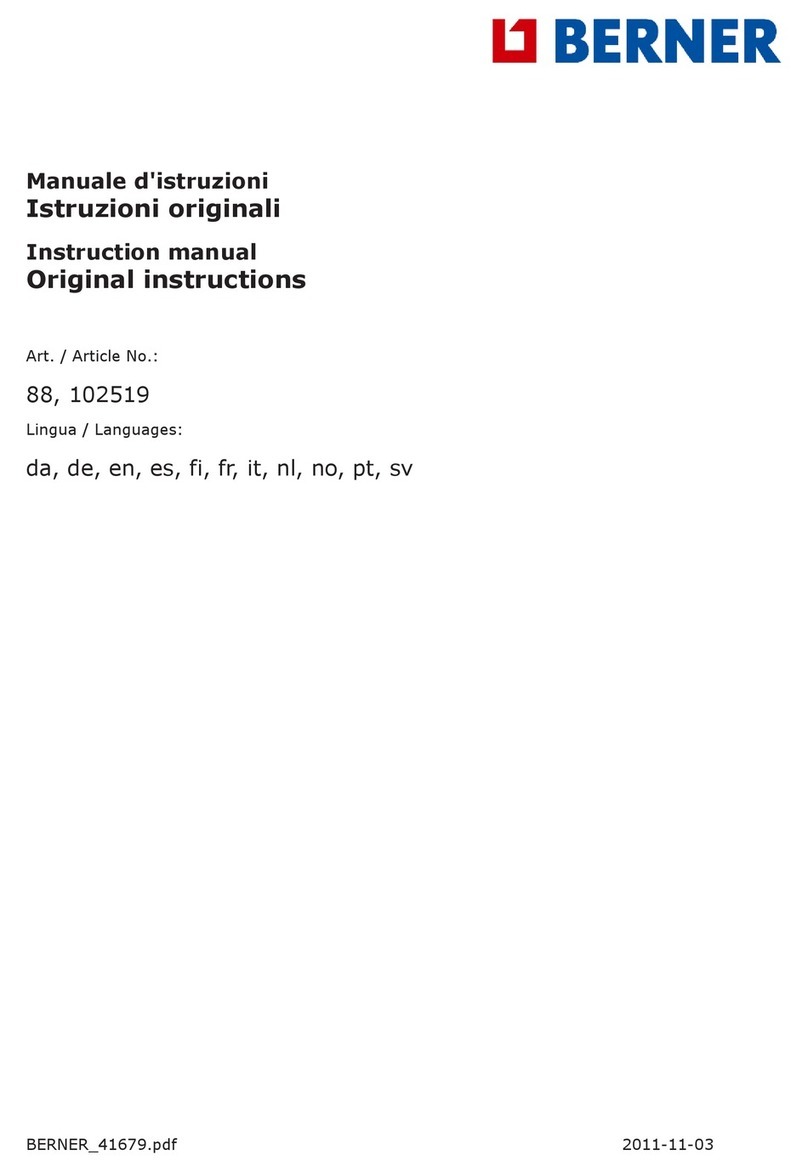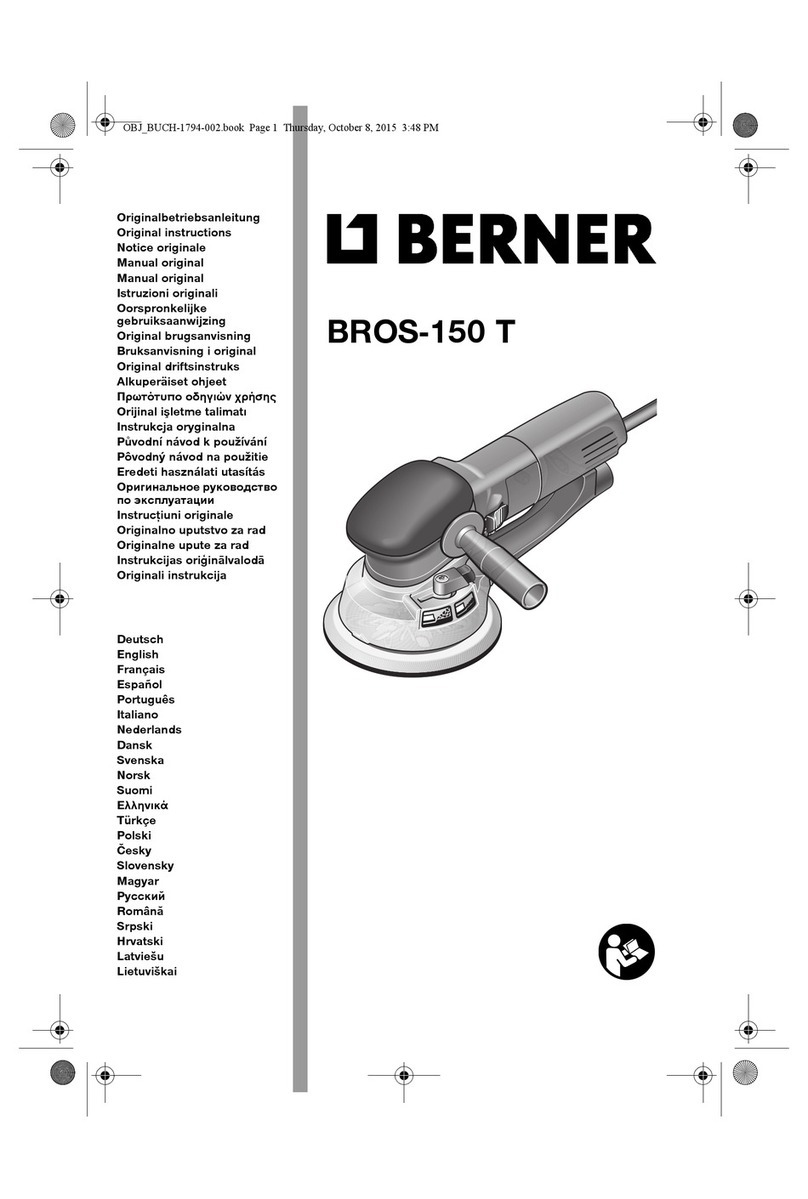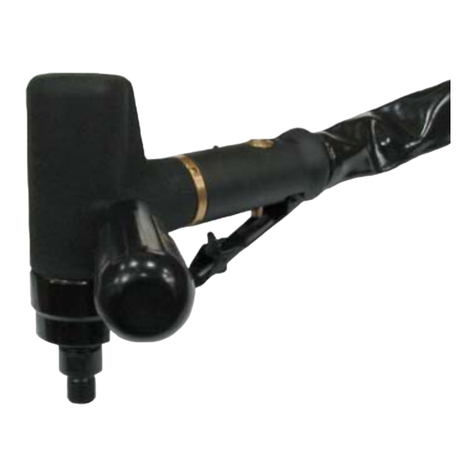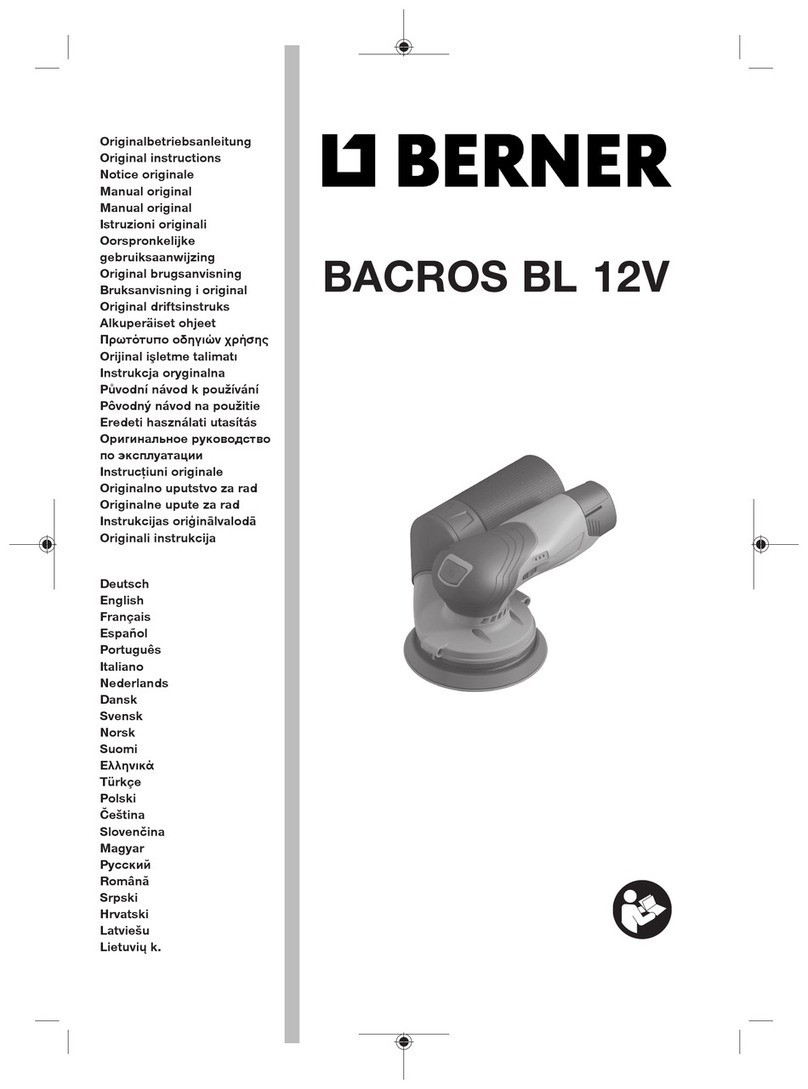
uTragen Sie geeignete Kleidung. Tragen Sie
keine weite Kleidung oder Schmuck. Halten
Sie Haare und Kleidung fern von sich bewe-
genden Teilen. Lockere Kleidung, Schmuck
oder lange Haare können von sich bewegenden
Teilen erfasst werden.
uWenn Staubabsaug- und -auffangeinrichtun-
gen montiert werden können, sind diese an-
zuschließen und richtig zu verwenden. Ver-
wendung einer Staubabsaugung kann Gefähr-
dungen durch Staub verringern.
uWiegen Sie sich nicht in falscher Sicherheit
und setzen Sie sich nicht über die Sicher-
heitsregeln für Elektrowerkzeuge hinweg,
auch wenn Sie nach vielfachem Gebrauch mit
dem Elektrowerkzeug vertraut sind. Achtloses
Handeln kann binnen Sekundenbruchteilen zu
schweren Verletzungen führen.
Verwendung und Behandlung des
ElektrowerkzeugsDeutsch
uÜberlasten Sie das Elektrowerkzeug nicht.
Verwenden Sie fur Ihre Arbeit das dafür be-
stimmte Elektrowerkzeug. Mit dem passenden
Elektrowerkzeug arbeiten Sie besser und siche-
rer im angegebenen Leistungsbereich.
uBenutzen Sie kein Elektrowerkzeug, dessen
Schalter defekt ist. Ein Elektrowerkzeug, das
sich nicht mehr ein- oder ausschalten lässt, ist
gefährlich und muss repariert werden.
uZiehen Sie den Stecker aus der Steckdose
und/oder entfernen Sie einen abnehmbaren
Akku, bevor Sie Geräteeinstellungen vorneh-
men, Einsatzwerkzeugteile wechseln oder
das Elektrowerkzeug weglegen. Diese Vor-
sichtsmaßnahme verhindert den unbeabsichtig-
ten Start des Elektrowerkzeuges.
uBewahren Sie unbenutzte Elektrowerkzeuge
außerhalb der Reichweite von Kindern auf.
Lassen Sie keine Personen das Elektrowerk-
zeug benutzen, die mit diesem nicht vertraut
sind oder diese Anweisungen nicht gelesen
haben. Elektrowerkzeuge sind gefährlich, wenn
sie von unerfahrenen Personen benutzt werden.
uPflegen Sie Elektrowerkzeuge und Einsatz-
werkzeug mit Sorgfalt. Kontrollieren Sie, ob
bewegliche Teile einwandfrei funktionieren
und nicht klemmen, ob Teile gebrochen oder
so beschädigt sind, dass die Funktion des
Elektrowerkzeuges beeinträchtigt ist. Lassen
Sie beschädigte Teile vor dem Einsatz des
Gerätes reparieren. Viele Unfälle haben ihre
Ursache in schlecht gewarteten Elektrowerkzeu-
gen.
uHalten Sie Schneidwerkzeuge scharf und sau-
ber. Sorgfältig gepflegte Schneidwerkzeuge mit
scharfen Schneidkanten verklemmen sich weni-
ger und sind leichter zu führen.
uVerwenden Sie Elektrowerkzeug, Zubehör,
Einsatzwerkzeuge usw. entsprechend diesen
Anweisungen. Berücksichtigen Sie dabei die
Arbeitsbedingungen und die auszuführende
Tätigkeit. Der Gebrauch von Elektrowerkzeu-
gen fur andere als die vorgesehenen Anwen-
dungen kann zu gefährlichen Situationen füh-
ren.
uHalten Sie Griffe und Griffflächen trocken,
sauber und frei von Öl und Fett. Rutschige
Griffe und Griffflächen erlauben keine sichere
Bedienung und Kontrolle des Elektrowerkzeugs
in unvorhergesehenen Situationen.
ServiceDeutsch
uLassen Sie Ihr Elektrowerkzeug nur von quali-
fiziertem Fachpersonal und nur mit Original-
Ersatzteilen reparieren. Damit wird sicherge-
stellt, dass die Sicherheit des Elektrowerkzeu-
ges erhalten bleibt.
Sicherheitshinweise für SchleiferDeutsch
uVerwenden Sie das Elektrowerkzeug nur für
Trockenschliff. Das Eindringen von Wasser in
ein Elektrowerkzeug erhöht das Risiko eines
elektrischen Schlages.
uAchten Sie darauf, dass keine Personen
durch Funkenflug gefährdet werden. Entfer-
nen Sie brennbare Materialien aus der Nähe.
Beim Schleifen von Metallen entsteht Funken-
flug.
uAchtung Brandgefahr! Vermeiden Sie eine
Überhitzung des Schleifgutes und des Schlei-
fers. Entleeren Sie vor Arbeitspausen stets
den Staubbehälter. Schleifstaub im Staubsack,
Microfilter, Papiersack (oder im Filtersack bzw.
Filter des Staubsaugers) kann sich unter un-
günstigen Bedingungen, wie Funkenflug beim
Schleifen von Metallen, selbst entzünden. Be-
sondere Gefahr besteht, wenn der Schleifstaub
mit Lack-, Polyurethanresten oder anderen che-
mischen Stoffen vermischt ist und das Schleif-
gut nach langem Arbeiten heiß ist.
uReinigen Sie regelmäßig die Lüftungsschlitze
Ihres Elektrowerkzeugs. Das Motorgebläse
zieht Staub in das Gehäuse, und eine starke
Ansammlung von Metallstaub kann elektrische
Gefahren verursachen.
uHalten Sie das Elektrowerkzeug beim Arbei-
ten fest mit beiden Händen und sorgen Sie
für einen sicheren Stand. Das Elektrowerkzeug
wird mit zwei Händen sicherer geführt.
uWarten Sie, bis das Elektrowerkzeug zum
Stillstand gekommen ist, bevor Sie es able-
gen.
uSichern Sie das Werkstück. Ein mit Spannvor-
richtungen oder Schraubstock festgehaltenes
Werkstück ist sicherer gehalten als mit Ihrer
Hand.
6|Deutsch 1 609 92A 5NP • 20.8.20

